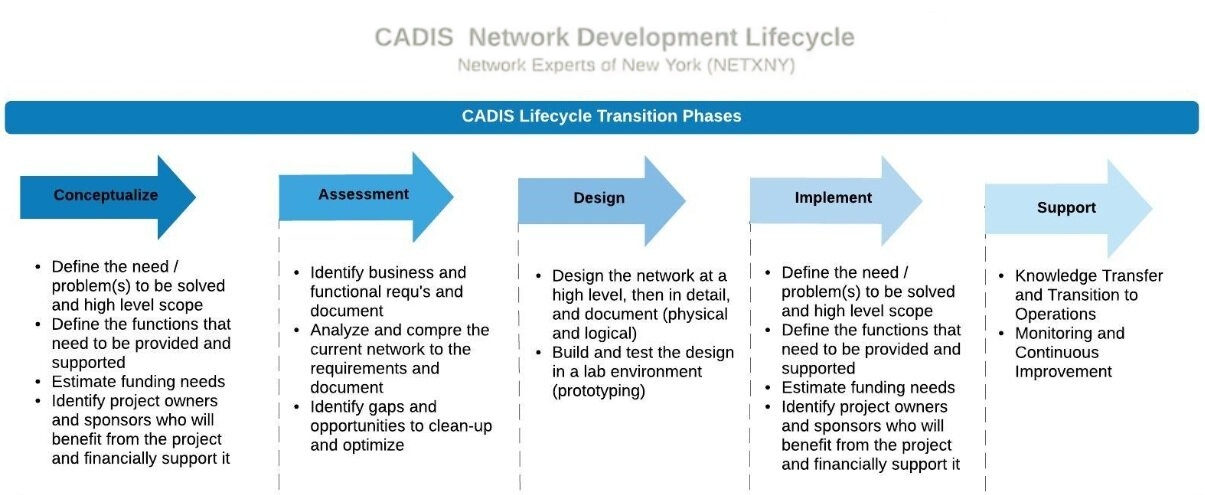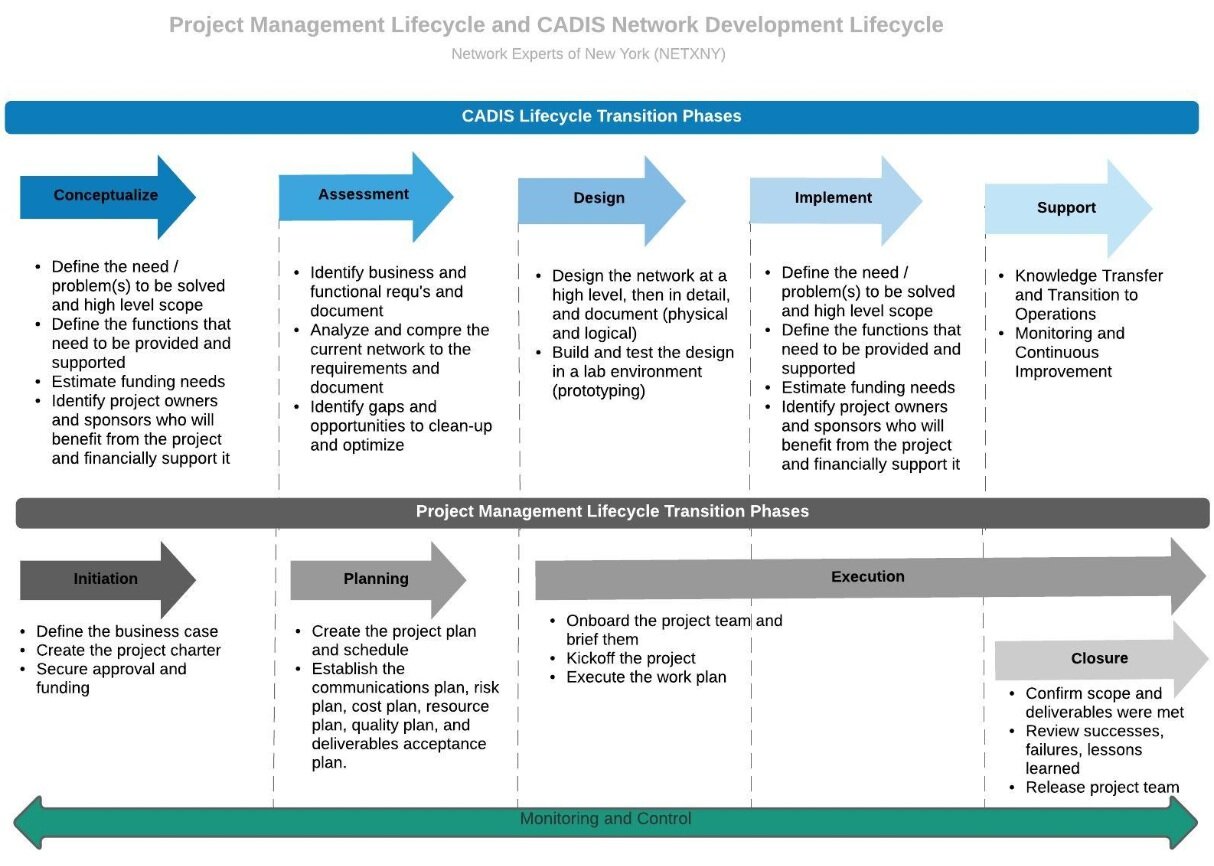A CADIS Network Lifecycle
NETXNY approaches each and every project in a consistent fashion to ensure predictable and repeatable outcomes for our customers.
The Conceptualize-Assess-Design-Implement-Support (CADIS) Network Lifecycle is predicated on executing the following steps:

A life-cycle model helps remove some of the ‘guess-work’, bias, risk, and assumptions. This also creates a baseline of how a network should perform and behave, which can be used to measure the success of the project, and to monitor network health.
-
Lower TCO
– Planning eliminates guesswork and enables the right equipment be used for the job. This avoids the overkill (biggest) or under-spec (cheapest) of solution components. This also minimizes redesigns, upgrades, and waste. -
Availability and Performance
– High availability in the network prevents costly downtime. -
Business Agility
– If you understand the business direction, the network can be future-proofed. This prevents a reactive ‘ground-up’ redesign in the near-future.
We also utilize the Project Management Lifecycle to complement the CADIS Lifecycle to guide the overall project and solution delivery. The PM Lifecycle - based on PMI’s Project Management Book Of Knowledge (PMBOK) – contains five phases for managing a project: Initiation, Planning, Execution, Monitoring and Control, and Closure. Where the CADIS Lifecycle is focused on creating a final product (i.e. a new network) the PM Lifecycle is focused on guiding all aspects of the Project from Start to Finish.
The PM Lifecycle and how each phase supports the CADIS Network Lifecycle

As a valued extension of your IT Department , NETXNY’s goal is to deliver EXPERT engineering expertise and SEAMLESS execution to ensure every Project results in a individualized client experience and yields the desired business outcome